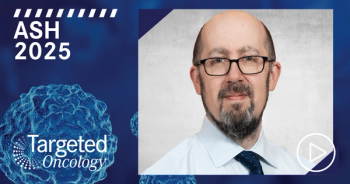
Glofitamab and GemOx Shows Durable Benefit in R/R DLBCL
Jeremy S. Abramson, MD, discusses the significant 2-year follow-up results from the phase 3 STARGLO trial in DLBCL.
Jeremy S. Abramson, MD, director of the Jon and Jo Ann Hagler Center for Lymphoma at the Massachusetts General Hospital Cancer Center, and associate professor of medicine at Harvard Medical School, in Boston, Massachusetts, discusses the significant 2-year follow-up results from the
According to Abramson, the rationale for this combination stems from a critical unmet need in second-line and later management of DLBCL. While chimeric antigen receptor (CAR) T-cell therapy is available for some, many older, frailer patients are ineligible for autologous stem cell transplant or lack access to CAR T-cells. For these individuals, effective treatment options are scarce, and few induce complete remissions.
“So, the STARGLO trial was designed to introduce the highly active bispecific antibody, glofitamab, in combination with gemcitabine and oxaliplatin as a second-line treatment for patients with DLBCL who are considered transplant ineligible,” he shares.
With 2 years of follow-up, the STARGLO trial demonstrates durable and sustained benefits across all relevant clinical end points. The study met its primary end point, showing a significant improvement in overall survival (OS). Glofitimab and GemOx led to a 40% reduction in the risk of death, with 54% of patients alive at 24 months compared with only 33.6% on R-GemOx. The median OS for Glofit-GemOx was not evaluable, highlighting its sustained benefit, vs 13.5 months for R-GemOx (HR, 0.60).
Key secondary end points also showed substantial ongoing benefit. Progression-free survival was significantly improved, with a 60% reduction in the risk of progression or death favoring glofitimab and GemOx (median 13.8 months vs 3.6 months for R-GemOx; HR, 0.41). The complete remission (CR) rate was notably higher with glofitimab and GemOx (58.5% vs 25.3%). For patients achieving CR on glofitimab and GemOx, the median duration of CR was not reached, and 82.4% of patients in CR at end of treatment remained in remission 1 year later.










































